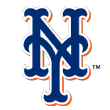Here are six guys, all big question marks heading into the season based on their performances in 2016. Five were former stars, one was once projected to be a big star. Let’s see how they fared in the season's first month.
From 2012 to 2015, Heyward was an above-average major league hitter, producing a .348 OBP while averaging 16 home runs per season. In 2016, he was a terrible hitter. His defense was terrific, as usual, but he hit .230/.306/.325 with just seven home runs, and then hit .104 in the postseason with one RBI in 48 at-bats. He worked all offseason and in spring training to change his swing.
Here he is hitting a home run in April:
Jason Heyward has 10 RBI in his last four games.
— Chicago Cubs (@Cubs) April 24, 2017
And three of these: pic.twitter.com/er2wXItgH8
Here he is with a base hit in the World Series:
Remaking a swing isn’t easy. Heyward has tried to unlearn years of muscle memory and start from scratch. While there are obvious similarities, the biggest change has been getting rid of that awkward twist of his top hand, lowering the starting position of his hands and making the bat more vertical. Basically, in 2016 he seemed all knotted up; it really was painful watching him swing. This year, at least he looks a little more relaxed up there.
The early numbers appear positive: .279/.340/.407 with three home runs. I still need more evidence. The three home runs came in a four-game span, two in Cincinnati off Tim Adleman and Lisalverto Bonilla, and the one above against Chad Kuhl. He has just one other extra-base hit.
Digging deeper, I don’t see a lot of change in his rates:
That’s still a lot of ground balls and not enough fly balls, although at least he’s hitting the ball a little harder, according to Statcast data. One problem last year was Heyward seemed incapable of turning on fastballs, especially good fastballs. He hit .249/.326/.358 against fastballs, with just two home runs on pitches harder than 92 mph; he’s at .292/.370/.458 this year, and two of those home runs did come off fastballs, including connecting on Kuhl’s 94 mph heater. Let’s give Heyward time to grow comfortable, but until he proves he can drive the ball in the gaps, I don’t know if we’ll see much improvement over 2016.
 Zack Greinke, Arizona Diamondbacks
Zack Greinke, Arizona Diamondbacks
His first season in the desert was a disappointment, as he posted a 4.37 ERA and missed time with an oblique injury. The inconsistency was frustrating, as he had four starts in which he allowed seven-plus runs, but most alarming was the drop in his strikeout rate:
2013: 20.6 percent
2014: 25.2 percent
2015: 23.7 percent
2016: 20.1 percent
The good news is his K rate fell once before in 2013 and he rebounded with two great seasons. So far in 2017, the news is even better with a strikeout rate of 26.3 percent. The fastball velocity is down, but Greinke is such a smart pitcher, he can compensate in other ways -- in fact, he's throwing fewer pitches than ever in the strike zone, counting on his ability to get batters to chase. That approach isn't the most efficient, however, as he's made it past 6 2/3 innings just once in six starts. At this point, given what happened in 2016, the Diamondbacks will take a 3.19 ERA and 30 starts.
I see a whole bunch of red flags here so far.
Fastball velocity: Down. He's at 93.9 mph, down from 95.8 in 2015. Still above-average velocity, but if you want peak Matt Harvey, he's not there yet, and as he said in spring training, that Matt Harvey will probably never return.
Command: He has allowed five home runs on his fastball -- two of those with two strikes, one on a 1-1 pitch and another on an 0-1 pitch. That seems like a location issue.
Strikeout rate: Way down. In fact, check out his yearly K rates since 2012:
2012: 28.6 percent
2013: 27.7 percent
2014: 24.9 percent
2015: 18.9 percent
2016: 14.9 percent
This is a big issue. Strikeouts are good! Of 108 qualified starters, he ranks 95th in strikeout rate. In 2015, he ranked 16th.
Well-hit average: Up. While he's allowed a .220 batting average, his well-hit average -- hard contact -- is .211, way above even last year's .148 mark. That's one reason he has allowed six home runs already in 29 2/3 innings.
OK, maybe you want to throw out that last start against the Braves, when he didn't expect to pitch and allowed six runs with just one strikeout, a day after he said he had lifted weights, leaving him tired.
Anyway, the big thing that isn’t happening is Harvey isn’t getting batters to chase out of the zone (which is why his strikeout rate is way down). He's been above 30 percent every year of his career and was even at 33.6 percent last year; this season, he’s way down at 22.4 percent. The breaking stuff just isn’t fooling batters often enough right now. As with Heyward, let’s give this more time. With Noah Syndergaard out, the pressure is clearly on Harvey to step up.
 Jordan Zimmermann, Detroit Tigers
Jordan Zimmermann, Detroit Tigers
The Tigers signed Zimmerman to a $110 million deal last year, and he got off to a good-if-fluky start in April and then struggled the rest of the way with an ERA near 7.00. A neck strain didn’t help, and a lack of stamina led to too many short outings.
The early returns aren’t promising. While he’s 3-1 in five starts, that’s a reminder that win-loss records can be misleading. He has a 6.18 ERA, he has allowed 36 hits in 27 2/3 innings and his strikeout rate is worse than Harvey’s. While he was never a big strikeout pitcher with the Nationals, relying on that two-seamer to generate ground balls, his rates have plummeted since arriving in the American League. His BABIP is a little high right now, but some of the other indicators aren’t trending well, either: walk rate up, hard-hit rate up, home runs up.
The stamina issue is popping up again, as well, as opponents are hitting .310/.375/.759 against him the third time through the order. This just isn’t the same guy who pitched for the Nationals, and it wouldn’t surprise me if he ends up getting moved to the bullpen. (Hey, the Tigers could use some help down there!)
 Maikel Franco, Philadelphia Phillies
Maikel Franco, Philadelphia Phillies
Franco is interesting because the Phillies are hoping (desperately hoping?) he can develop into a key cog in the lineup for the next Phillies playoff team. Considering most of the success stories in their rebuild have been with pitchers, they’ll really need him to produce.
Franco has power and good contact skills, but he didn’t produce anything special in 2015: 25 home runs but an otherwise mediocre .255/.306/.427 line. A high chase rate led to too much weak contact, and pitchers didn’t have to challenge him.
A few positive signs so far: The chase rate has dropped from 32.1 percent to 24.8 percentage. He’s swinging less and making contact more often. Of course, it’s all small-sample-size stuff, and it hasn’t translated into better numbers just yet -- .213/.273/.382 -- so the concern is Franco will go back to swinging at bad pitches and remain somebody who doesn’t reach his potential. Step 2 is incorporating more loft into his swing. His average launch angle, according to Statcast, is 9.0 degrees, below the MLB average of 12.8 degrees and well below the angle of your elite power hitters. He’s still just 24, and the tools are there for him to be something better. For now, however, he remains a question -- not an answer -- for the Phillies' future.
 Ryan Zimmerman, Washington Nationals
Ryan Zimmerman, Washington Nationals
As it turns out, the best hitter in April wasn’t Bryce Harper or Eric Thames or Freddie Freeman, but a 32-year-old first baseman whose last good season was in 2013. Zimmerman hit .420/458/.886 with 11 home runs, an astonishing turnaround from 2016.
Let’s back up. Zimmerman hit .218 /.272/.370 last year as the Nationals had the worst first-base production in the majors. Given his age and history of injuries, the Nationals’ refusal to upgrade seemed mostly a reflection of Zimmerman’s contract -- he’s signed through 2019.
At the behest of teammate Daniel Murphy, Zimmerman worked on changing his swing path. He hit the ball hard in 2016 but too often on the ground. Now he’s hitting fly balls, and he’s hitting them out of the park and nobody can get him out, and it certainly helps that Harper and Murphy are always on base in front of him. Here, you can see Joe Posnanski break down Zimmerman's improvement.
Zimmerman will certainly cool off at some point, but everything indicates the improvement is real.


